WATERFRONT NEIGHBORHOODS HUDSON BEACH
Wow! So, what is it like living in Hudson?
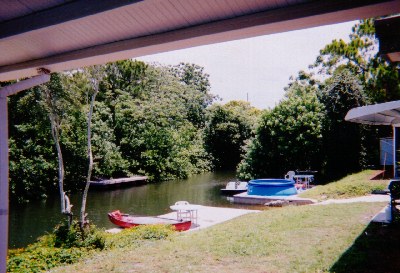
I. ENVIRONMENT
This city has a great natural element to it:
fresh air
gulf breeze
tropical greenery
bright stars at night
and unification with water.
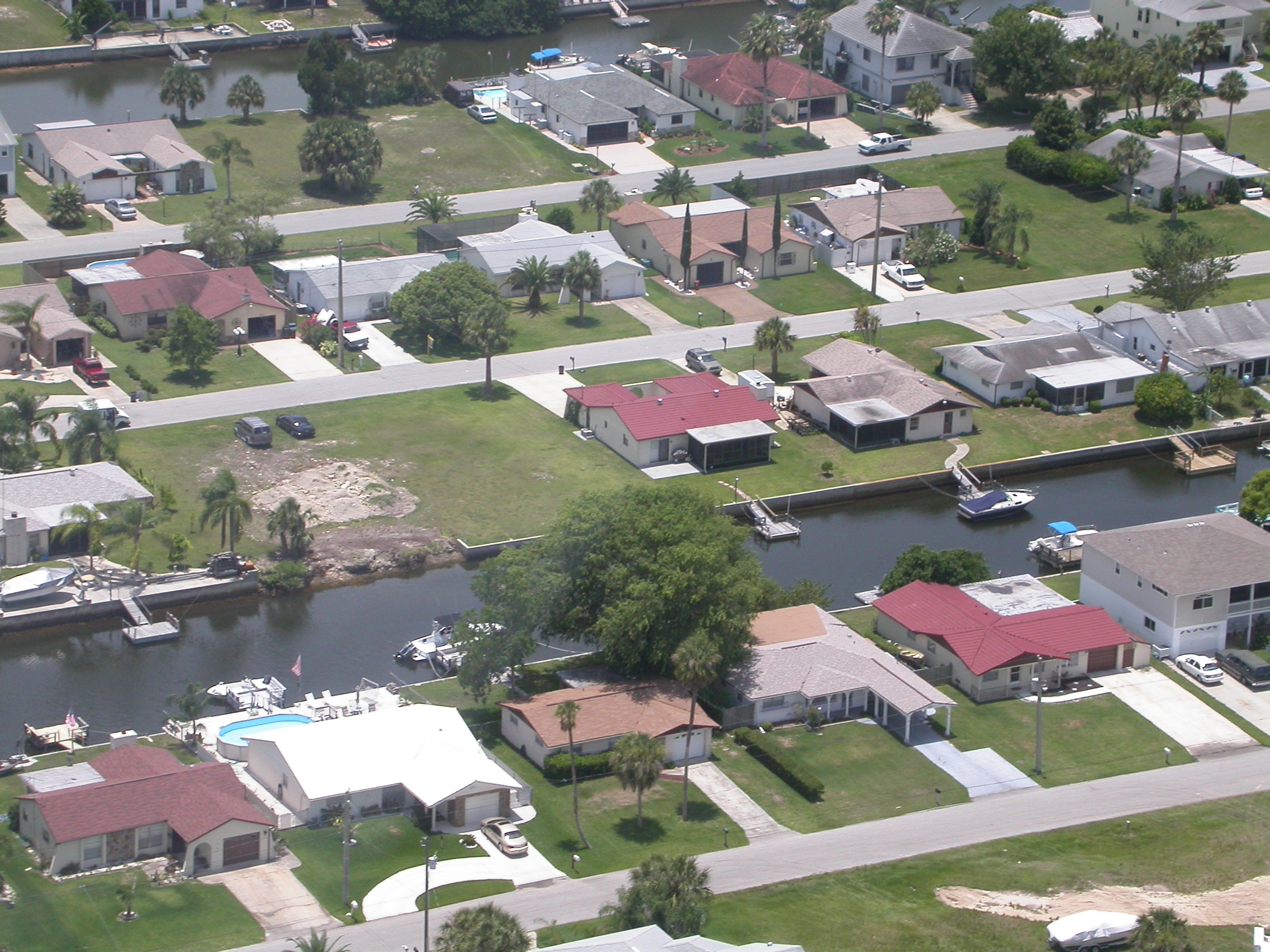
It usually surprises people to learn about this town, now a far 'exurb' of Tampa. First of all, it isn't famous like Ft. Lauderdale or other canal cities like it. Secondly, when people do arrive, it surprises people to see that 'New Florida' elegant three story stilt homes stand next to ranch style 'Old Florida' dwellings, which are often side by side with more... modest mobile and various other dwellings.
The next thing that strikes visitors is that water is completely integrated to life west of US 19, and almost everywhere there is a view of it. For every street, there is an inland waterway- an arm of the Gulf, behind it.
The beach, originally made by the residents themselves, is the best spot for taking in scenery. Watching the ocean waves splashing onto shore is very nice, but despite this, Hudson Beach was never popular except with locals, because it was unknown. Certainly it is not spectacular like Clearwater, Green Key or Fred Howard Park, all to the south on 19. But it offers the same great sunsets, the best to found anywhere in the world. Plus, allowing for cars and boats, Hudson has no pollution.
![]()
|
![]()
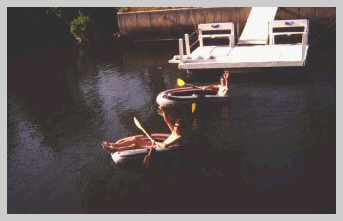
Living on an Inland Waterway?
As far as the canals go, a few things spring up.
For boaters and fisherfolk, there is nothing better
than a canal in the back of your house.
For the wife, you will get the fishtank effect
(stress-relief) on a grander scale...
which helps everybody.
And all this discounts the even bigger picture: There is something about moving water that gives people comfort and enjoyment. Though land animals, it is natural for people to be drawn to the water. Maybe it is the salt in our blood, a leftover of the three billion years when our ancestors swam in the selfsame world ocean that exists still, of which the Gulf of Mexico is but a part. In any event, it is exhilarating to be around moving water- it bestows a sense of urgency, one that strikes a chord in Americans, at a time when we are ready for the concept of renewal. A bare appreciation of 'nature' as such came late, not until the 1600s. Until that century, no mountain climbs are recorded 'for the fun of it' or, 'because it is there.' Then, Europeans began climbing the Alps for just those reasons. With water it was the same. Mode of transporation yes. Obstacle to be surpassed yes. But today we can add deep appreciation of nature as such. The philosopher Thomas Hobbes said in Leviathan that nature and natural man are both crude and mean. True, while Captain Cook and other seasoned men found 'natural' people in the South Pacific who were quite happy, they were sadly the exception. (Recall that Magellan was killed in the Philippines [before they were the 'Philippines'] and half the crew of the HMS Bounty were killed by natives of islands around peaceful Tahiti). After Hobbes and his mean nature, Jean-Jacques Rousseau stated in The Social Contract that nature was inherently good and natural man was virtuous, again inherently. Of his own time, he said 'man is free but everywhere in chains'.
Well, floating through the leafy canals of Hudson, its easy to think, or at least hope for the potential, that Rousseau may be right. Being as it is that 'wild' nature is in style now (hence the EPA and their massive lobby in Washington) it seems a little politically incorrect for Hudsonians to be praising a system of manmade canals- (which are after all illegal to create today), because it means lauding not wild, but controlled nature. Nevertheless, it seems to a lot of people here that nature controlled and made better (Hudson was a swamp before) is worth something and it gives us a good feeling to see it. In a wild world, Hudson's controlled nature without losing its wildness gives the comfort that we are in control of our own destiny and can manipulate the world around us for the purposes of a better life- as the Dutch did when they created the Zuider Zee and their famous polderlands- reclaiming land from the erosion of the sea a few centuries ago. Holland is small, America is big. We work on grand scales, and must ask if it is not our duty as a race on Earth to make our country and the world better. Hudson is a small albeit cohesive attempt to do just that to a certain section of a certain township of a certain county of a certain state of a certain nation on a certain planet in the cosmos.
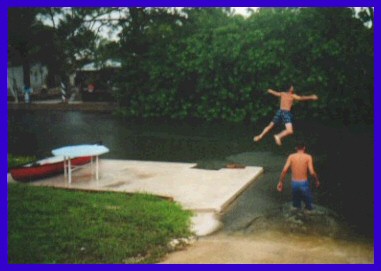
Philosophy of connectedness with the aquatic ecosystem aside, people simply should be able to get out of the car, walk in the front door, derobe, walk out the back door, and get into their boat! Why? Because people have done this living on major rivers and seacoasts since the round reeded boats of Mesopotamia and Egypt five thousand years ago. Fact is, the canals do encourage an active outdoor lifestyle, as well as have function. For instance, in Hudson, you can get to many relaxing destinations from your backyard by boat (and park it for free for the day): Dockside, Sam's Beach Bar, Inn-on-the-Gulf, Blackbeard's Oyster Bar, Hudson Beach, Hudson Marina, Skeleton Key Marina, Strickland Park, etc. It behooves local businesses to make them accessible to the West, towards increasing the Venetian aspect of the town. For jetskis and waverunners, its like a paradise. Here, even if you live in a 900 sq. foot trailer from 1970, the entire Gulf of Mexico is your backyard, and that's a big yard.
|
|
|
Venetian? Well, its a bit of a stretch, but only a bit
Apart from getting somewhere, living on a canal means you have the entire underwater ecosystem at your leisure.
It gives therefore, the added benefit of going out to observe the beauty and intricacy of aquatic nature.
Let us then turn to this vegetation and wildlife.
![]()
|
![]()
VEGETATION AND WILDLIFE

'Cat'
The vegetation here is made up of green subtropical plants, usually looking as though they came out of the Mesozoic. All kinds of interesting plants are around, the famous Florida palm trees and many citrus fruit trees: orange, coconut, grapefruit, star-fruit, also banana. Click here for tips on planting fruit trees and all other plants in Hudson's subtropical soil.
Animals proliferate, wild, semi-wild and domestic:
BIRDS: Bird watchers have many exotic ones to enjoy in Hudson, there are bird sanctuaries scattered around the town, and there is a plan to possibly develop the one at Old Dixie and New York Ave. into a wetlands / nature park. Click here for a great website about the amazing tropical birds of the Hudson area!
MANATEES: The endangered populations of the Florida Manatee swim in Hudson, in the warmer canals and out in the shallow gulf water. When they are ready to have babies, they even make nurseries in the canals. Local boaters must be careful not to grind up manatees with their props.
DOLPHINS: Dolphins have actually been seen in the canals, but usually they jump around in the gulf.
You can see them from Hudson Beach and of course, out on boats.
FISH AND CRABS: Lots of different fish inhabit the canals and the gulf, including snook, sheepshead, grouper, redfish, cobia etc. as do many kinds of crabs including Stonecrab and the blue shelled species.
This is a good example of smart energy usage, ironic that the solar panels collect light, to power swimming pools and air conditioners!
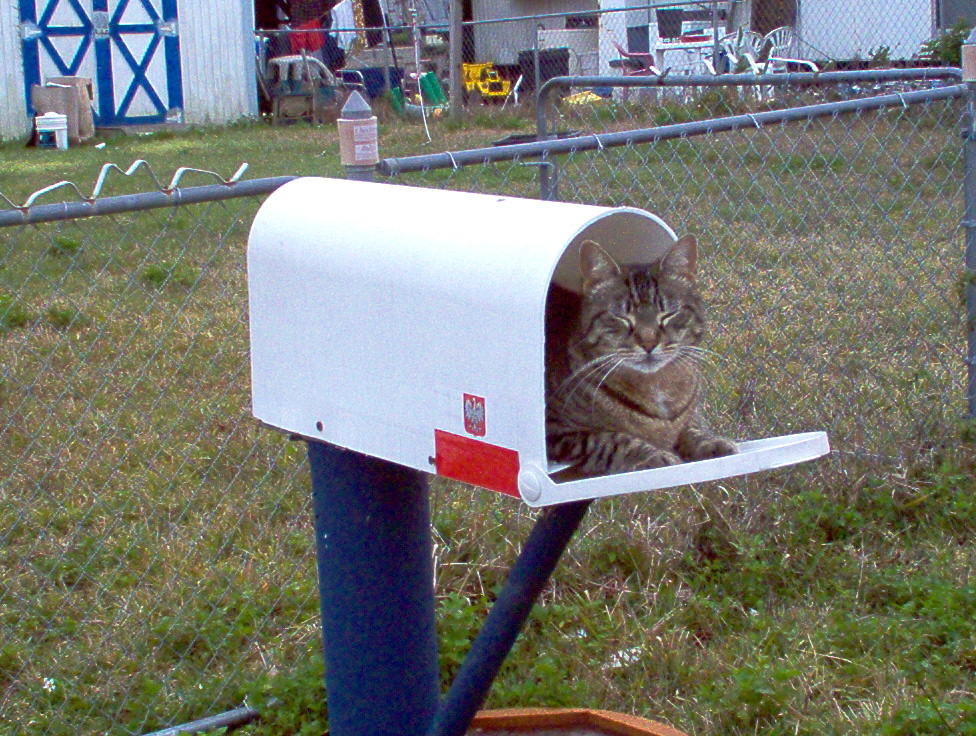
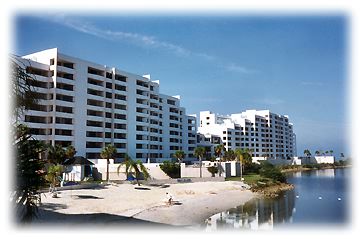
Hudson has much in the way of exotic wildlife --- What about fishing from a window in Gulf Island?
Here is an account of animals from Hudson's past, taken in abstract from "The Story of Hudson" by Miller, 1973.
"Animals in Hudson have had to adapt to the coming of man. Some have not found man conducive co-habitors. Even in the 1960's bears sometimes lumbered through Hudson Beach Estates! Usually, footprints on the canal banks attested to a nocturnal visit. In 1973 one of the last bears of the area, a black bear who lived between Cape Cay and Fillmun's Bayou, (behind Fisherman's Shack), met its fate on US 19 and local people got their first taste of bear meat, prepared by members of the Hudson fire department. Bald Eagles are rarely seen anymore. It used to be that residents had to keep an eye on their cats with these guys around. Other creatures like seagulls, have found people to be very useful. They are always now waiting for handouts of food being thrown in the canals or anywhere else for that matter. They post sentinels whose duty is to report, in some way, the appearance of anyone with food for them. It takes only a few minutes for the entire flock to arrive. Usually, people don't find seagulls to be the most pleasant or 'fancy' critter around, but perhaps we would have a different opinion if they were gone, because they do eat a lot of offal that would otherwise lay around. If you want to see some, throw a bunch of popcorn into a canal and wait 30 seconds. Sometimes if a duck gets a fish from a canal, a seagull will try to get it from him."

A great shot of a dolphin, large as life, in a Hudson canal! Photo submitted by Dave O'Connell, thanks Dave!
Fish and other sea life used to be much more plentiful in the canals. But people have been selfish, especially recently, and fertilize their backyards etc, and dump things into the canals. This practice should be illegal, because it dwindles the fish population and kills manatees. What the hell do you need fertilizer for anyway? This is a very fertile area already, and is it worth it to see your plant grow up a week early? These people are ruining good fishing for the rest of us. Remember, nature bats last. Let me spell it out for you, "YES IT IS BAD TO PUT POISONS LIKE FERTILIZER INTO THE CANAL, OK?"
Nature has its own way of fixing problems that DON'T include artificial selection. For example, in 1962 there was a freeze in winter, and a school of mullet was caught in a cold spot and 400 went belly up. They washed onto the bank of a canal (before the days of sea walls) and then the weather got warm. The neighbors were scared that the fish would rot but Mother Nature sent a flock of Turkey Buzzards in to clean up the mess!
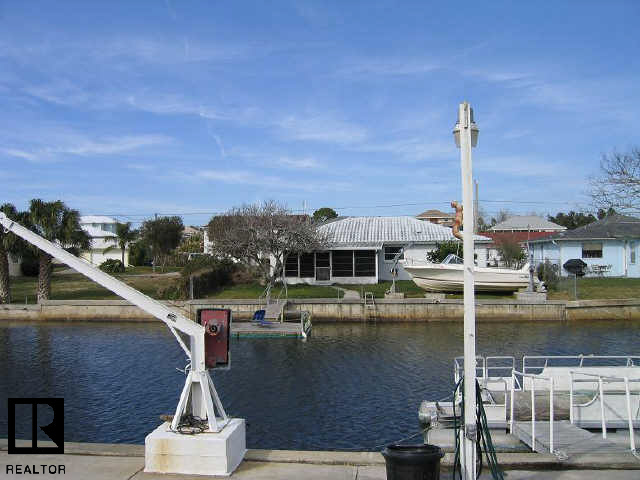
Depth of the water: Hudson's canls vary in their depth, from about 5-7ft at low tide. The canals are safe for all boats, but one must know how to navigate in certain areas because rocks exist at the end where some canals meet the Gulf. This is only an issue at low tide, luckily, but it is a serious issue, as experienced boaters here will tell you. The Gulf waters in the Tampa/Hudson area are shallow, gaining about 2 ft. in depth per mile out to sea. Hence the amazing stilt houses off the coast of New Port Richey, 'fishing shacks' built by old time Pasco residents, standing a mile off shore on stilts, connected to the bottom. The shallow depth is easily navigable with small watercraft, and for large boats, there is the deep water Hudson Channel and auxiliary channels that goes out from the beach, for 2 miles, ending where the water level is drops considerably. After a 20 year stuggle to deepen the Channel, they finally did it in 2005, and now boaters are much happier. Hudson is now the last deep water port going north until the Big Bend of Florida.
The night sky in Hudson is majestic. Soon after the reds, blues and pinkish hues of the sunset disappear into the horizon, the stars come out. One of the best parts of the Suncoast is when the sun is not around, because most nights here are crystal clear. Out on a boat offshore is the best, the mist from the sea on one side, the lights of Hudson glowing on the other, and above, a canopy of bright stars. From here, one can see that looking to the north, it is pitch black down to the horizon. Looking at the major Sunbelt metropolis to the south however, you can see the dark orangish haze of the city lights in the distance. In 1959, the same year that Cadillac make the car with the huge fins, the Russians launched a space vehicle called Lunik, which they sent to the moon with the mission to plant the Soviet flag on it to... "claim it." Well, lucky for us it missed the moon and went into orbit around the sun somewhere between Earth and Venus. The Russians saw a strange victory in their defeat: they renamed Lunik, calling it 'Miechka,' (The Dream). By putting a space vehicle made on Earth in orbit around the Sun, they changed the cosmos. Human beings have since launched countless satellites, space stations and probes, to go where no man had gone before. In Hudson we look up at this cosmos and feel a lucid connection to it, as we are a part of the cosmos that has come alive and is self aware. The Dream, of outer space and our connection to it is at the core of the frame of mind of many people in Hudson. The same people who work on their house and make the environment here healthy, that care about the neighbors and foster a sense of sturdy individualism with respect to the community at large, and realize that those ideals are not so different from each other, do not scoff at the kind of introspection that says, "The dreams of the Apollo missions live on here." If we can make it through the first decades of the 21st Century without a world-slaughtering nuclear exchange with China, we may make it to the stars. Click on the above photo for a good look at our local solar neighborhood, the places that we can be this century- and with luck (and sound public and foreign policy), will.
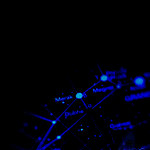
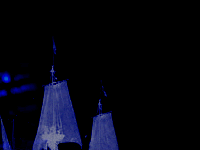
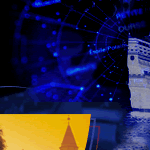
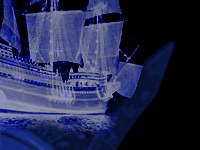
ship of destiny
![]()
|
![]()
<------CLICK FOR YOUR DISEMBARKATION